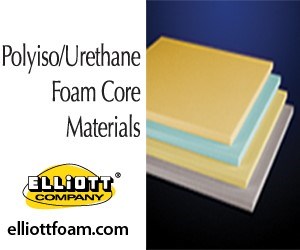Yangtze River Delta R&D center introduces plant fiber-based breathers
CCIC Eco-Breathers move away from petroleum-derived polyester or polyamide breathers, enabling reuse in multiple composite molding cycles and available in biodegradable formats.
The Yangtze River Delta Carbon Fiber and Composite Material Innovation Center (CCIC, Changzhou, China), focused on the research, development and industrial application of composite material structures and green manufacturing technologies, has developed a range of Eco-Breather products incorporating plant fibers to address environmental concerns associated with petroleum-derived polyester or polyamide breathers.
Breathers are nonwoven, consumable fabrics used in composites manufacturing, particularly in vacuum forming techniques. They facilitate airflow and enable volatile substances to escape, ensuring continuous and uniform pressure is applied to the composite laminate during consolidation and curing.
CCIC Eco-Breathers are reported to be fully compatible with current composite vacuum techniques, with temperature resistance of up to 200°C. CCIC says they remain stable at elevated temperatures, without the softening and consolidation associated with 100% synthetic fibers. This preserves the original structure, maximizing permeability retention and enabling them to be reused in multiple molding cycle. Additionally, the Eco-Breather can be produced in a fully biodegradable form, supporting green manufacturing practices and contributing to a circular economy.
Related Content
-
Cannon introduces in-line resin degassing unit for infusion, RTM and pultrusion processes
Fully automatic system for processing large composite structural parts reduces overall degassing time in a single compact unit.
-
All-recycled, needle-punched nonwoven CFRP slashes carbon footprint of Formula 2 seat
Dallara and Tenowo collaborate to produce a race-ready Formula 2 seat using recycled carbon fiber, reducing CO2 emissions by 97.5% compared to virgin materials.
-
Bcomp, Temca achieve intricate composite cladding for French school façade
A combination of flax and glass fibers went into the development of 880 openwork, shade-providing panels for an international school in France.














